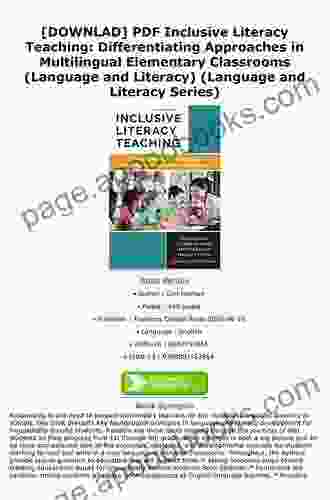Exploring Differentiating Approaches In Multilingual Elementary Classrooms: Language And

In today's increasingly diverse classrooms, educators are faced with the challenge of meeting the needs of students from a wide range of linguistic backgrounds. Multilingual elementary classrooms present unique opportunities and challenges, as students come to school with varying levels of proficiency in multiple languages. Differentiating instruction is an essential approach to ensure that all students are able to access and engage with the curriculum in a meaningful way. 5 out of 5 This article will explore differentiating approaches in multilingual elementary classrooms, with a focus on language and literacy instruction. We will discuss the benefits of differentiation, provide research-based strategies, and offer practical tips for implementation. Differentiation has a number of benefits for multilingual learners, including: There are a number of research-based strategies that teachers can use to differentiate instruction in multilingual elementary classrooms. These strategies include: Here are some practical tips for implementing differentiated instruction in multilingual elementary classrooms: Differentiation is an essential approach to ensuring that all students in multilingual elementary classrooms have the opportunity to succeed. By providing students with learning experiences that are tailored to their individual needs, interests, and cultural backgrounds, teachers can help to create a more inclusive and effective learning environment. The strategies and tips outlined in this article can help teachers to implement differentiated instruction in their classrooms. By getting to know their students, setting clear learning goals, planning for differentiation, being flexible, and monitoring student progress, teachers can create a learning environment where all students can thrive.Language : English File size : 8305 KB Text-to-Speech : Enabled Enhanced typesetting : Enabled Word Wise : Enabled Print length : 160 pages Screen Reader : Supported Benefits of Differentiation
Research-Based Strategies for Differentiation
Practical Tips for Implementation
References
5 out of 5
| Language | : | English |
| File size | : | 8305 KB |
| Text-to-Speech | : | Enabled |
| Enhanced typesetting | : | Enabled |
| Word Wise | : | Enabled |
| Print length | : | 160 pages |
| Screen Reader | : | Supported |
Do you want to contribute by writing guest posts on this blog?
Please contact us and send us a resume of previous articles that you have written.
 Book
Book Novel
Novel Page
Page Chapter
Chapter Text
Text Story
Story Genre
Genre Reader
Reader Library
Library Paperback
Paperback E-book
E-book Magazine
Magazine Newspaper
Newspaper Paragraph
Paragraph Sentence
Sentence Bookmark
Bookmark Shelf
Shelf Glossary
Glossary Bibliography
Bibliography Foreword
Foreword Preface
Preface Synopsis
Synopsis Annotation
Annotation Footnote
Footnote Manuscript
Manuscript Scroll
Scroll Codex
Codex Tome
Tome Bestseller
Bestseller Classics
Classics Library card
Library card Narrative
Narrative Biography
Biography Autobiography
Autobiography Memoir
Memoir Reference
Reference Encyclopedia
Encyclopedia Mark Levy
Mark Levy Michael Aaron
Michael Aaron Mark Prins
Mark Prins Michael Lind
Michael Lind Monique Orgeron
Monique Orgeron Michael Hitchen
Michael Hitchen Richard Middleton
Richard Middleton Peter Deneff
Peter Deneff Ronald Suresh Roberts
Ronald Suresh Roberts Stephen Murphy Shigematsu
Stephen Murphy Shigematsu Michael Steen
Michael Steen Marlene Targ Brill
Marlene Targ Brill Matthew Vale
Matthew Vale Nancy Mitford
Nancy Mitford Tabitha Forney
Tabitha Forney Richard Bienstock
Richard Bienstock Mrs Bertimus
Mrs Bertimus Neela Arnaud
Neela Arnaud Mary Frances Winters
Mary Frances Winters Paul Young
Paul Young
Light bulbAdvertise smarter! Our strategic ad space ensures maximum exposure. Reserve your spot today!

 Blake KennedyDiscover The Foundations Of Shifting: Learn How To Perform Seamless Up And...
Blake KennedyDiscover The Foundations Of Shifting: Learn How To Perform Seamless Up And...
 Fabian MitchellUnveiling the Masterpiece: The Complete Book of Old Time Fiddle Tunes for...
Fabian MitchellUnveiling the Masterpiece: The Complete Book of Old Time Fiddle Tunes for... Pete BlairFollow ·9.7k
Pete BlairFollow ·9.7k Eugene PowellFollow ·7.3k
Eugene PowellFollow ·7.3k Clarence MitchellFollow ·7.2k
Clarence MitchellFollow ·7.2k Colin RichardsonFollow ·4.2k
Colin RichardsonFollow ·4.2k Jermaine PowellFollow ·5.1k
Jermaine PowellFollow ·5.1k Keith CoxFollow ·11.8k
Keith CoxFollow ·11.8k Cody RussellFollow ·4.1k
Cody RussellFollow ·4.1k Jeremy CookFollow ·9.2k
Jeremy CookFollow ·9.2k
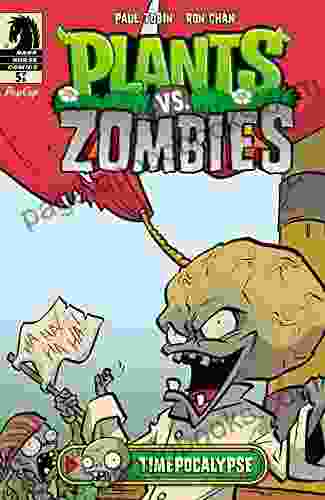
 Ben Hayes
Ben HayesJourney into the Verdant Realm of "Plants vs. Zombies:...
Immerse Yourself in an Epic Battle for...

 Edward Reed
Edward ReedUnveiling the Allure of Modish Crochet Hats Annie...
In the realm of fashion and...

 Jaylen Mitchell
Jaylen MitchellHalf Moon Bay: An Unforgettable Adventure Awaits in Aj...
Prepare yourself...
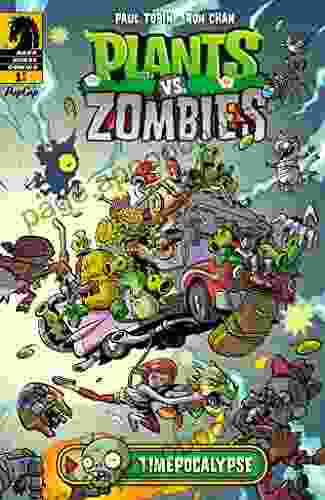
 Dan Brown
Dan BrownUnleash the Plant-Powered Apocalypse: Dive into Paul...
Prepare yourself for an epic showdown where...
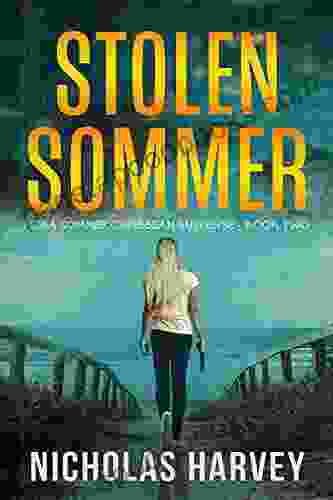
 Efrain Powell
Efrain PowellStolen Summer: Nora Sommer's Enthralling Caribbean...
Escape to a World of...
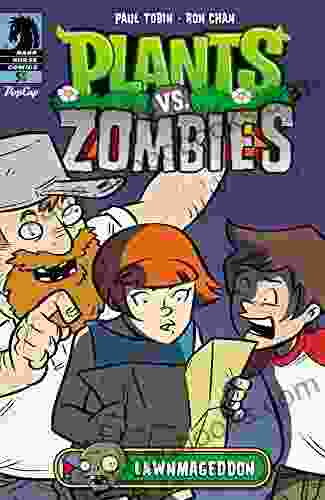
 Steven Hayes
Steven HayesPlants vs. Zombies: Lawnmageddon - The Ultimate Battle...
Prepare for the ultimate battle between plants...
5 out of 5
| Language | : | English |
| File size | : | 8305 KB |
| Text-to-Speech | : | Enabled |
| Enhanced typesetting | : | Enabled |
| Word Wise | : | Enabled |
| Print length | : | 160 pages |
| Screen Reader | : | Supported |


